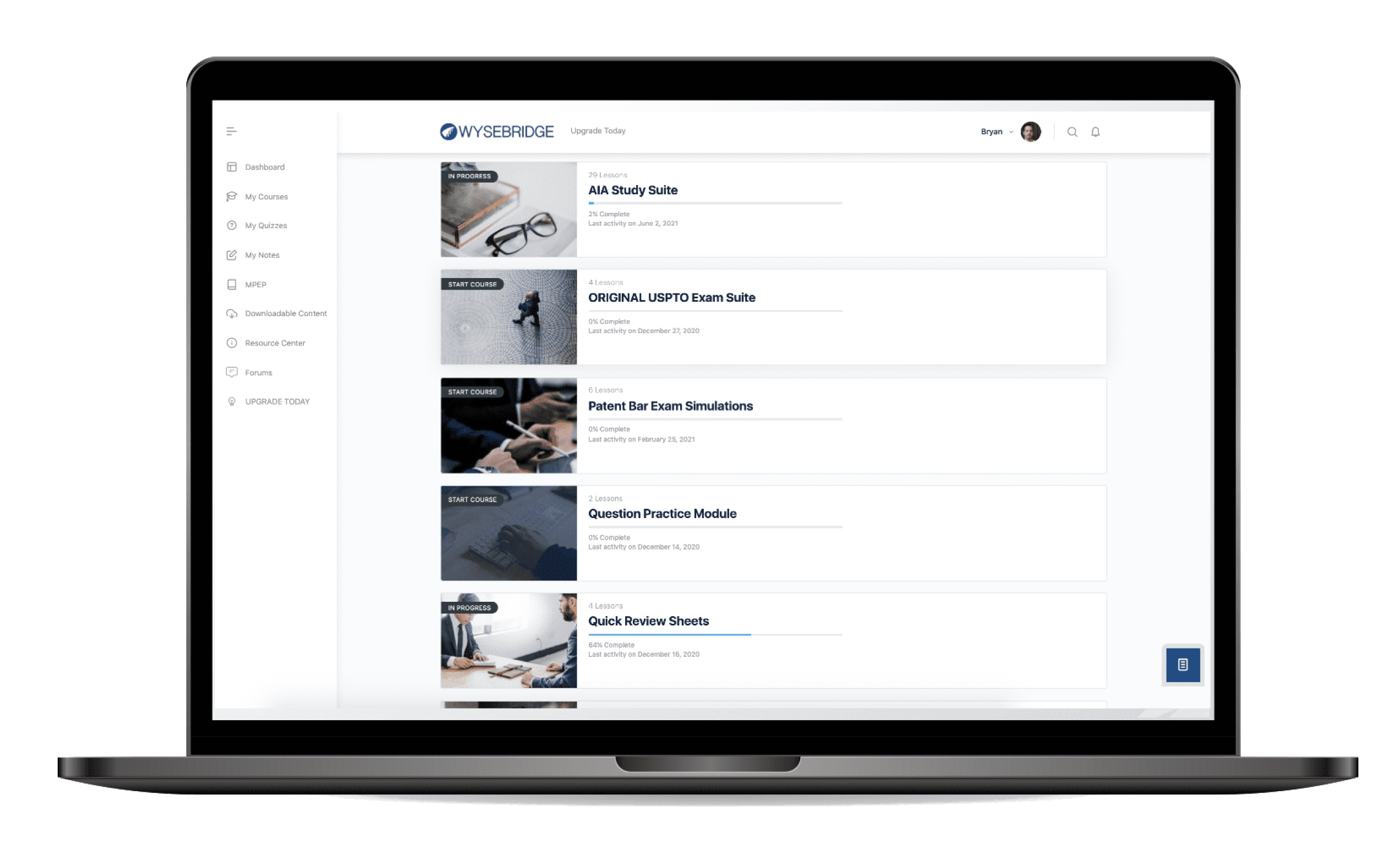Learn all about
THE PATENT BAR EXAM
Understanding the Patent Bar Exam
The Patent Bar Exam, formally known as the USPTO Registration Exam, is a fundamental requirement for those aspiring to become registered patent attorneys or agents in the United States. This exam is not only a test of knowledge but also an assessment of one’s ability to apply complex legal principles in practical scenarios. It is open to candidates with a background in science or engineering, reflecting the technical nature of patent law. The exam’s primary focus is on understanding and applying the principles outlined in the Manual of Patent Examining Procedure (MPEP), which is the comprehensive guide to USPTO policies and procedures. The significance of this exam lies in its gatekeeping role; passing it grants the eligibility to represent inventors and companies in the patenting process, a critical aspect of intellectual property law.
Exam Format and Content
The Patent Bar Exam is administered electronically and comprises 100 multiple-choice questions, with a time limit of six hours. The exam is divided into two sessions of three hours each, typically with a morning and an afternoon session. Questions are designed to assess a candidate’s mastery of the MPEP and their ability to apply its guidelines accurately under time constraints. The content covers a wide array of topics, including but not limited to, patentability criteria, patent application requirements, Patent Cooperation Treaty (PCT) procedures, and post-issuance procedures. The questions range from theoretical legal principles to practical procedural aspects of patent prosecution. Since patent law evolves, the exam is updated regularly to include recent legal changes, most notably those resulting from major legislative acts like the America Invents Act.
What to Expect on Exam Day
Exam day can be intense for candidates. It’s important to arrive well-rested and prepared. The test is administered in a controlled environment, typically at a professional testing center. Candidates are allotted three hours to complete each half of the exam, with a break in between. The questions often involve complex scenarios requiring careful reading and analysis. Time management is crucial, as some questions can be time-consuming. It is advisable to familiarize oneself with the format of the electronic testing system before the exam day. While the exam is open book, relying solely on the MPEP during the test is impractical due to time constraints. Therefore, a strong grasp of the material and efficient use of the MPEP for reference are essential for success.
Industry Trends and Relevance
The patent law industry is continuously influenced by technological innovations and legal developments. The Patent Bar Exam evolves to reflect these changes, ensuring that new practitioners are equipped with up-to-date knowledge. Understanding these trends is crucial, as they often lead to changes in examination content and focus. For instance, recent advancements in areas like artificial intelligence, biotechnology, and digital communication have introduced new patent law complexities. Additionally, global events, such as international treaties and trade agreements, can also impact patent law practices. As a result, successful candidates must not only pass the exam but also commit to ongoing education to stay current in this dynamic field.
Passing Rates and Preparation Tips
The pass rate for the Patent Bar Exam has historically been challenging, with averages around 50%. This reflects the exam’s complexity and the breadth of knowledge required. Successful preparation typically involves a thorough study of the MPEP, supplemented by review courses that offer structured learning paths, practice questions, and mock exams. Candidates often spend several months preparing, with a focus on understanding the intricacies of patent law and developing the skill to quickly reference the MPEP. Regular practice with sample questions and simulated exams can significantly improve time management skills and question comprehension. Additionally, joining study groups and participating in forums can provide valuable insights and support from peers who are also preparing for the exam.
After the Exam: Building a Career in Patent Law
Passing the Patent Bar Exam is just the beginning of a promising career in patent law. Registered practitioners have numerous opportunities across various sectors. They can work in law firms, specializing in patent prosecution, litigation, or advisory roles. Corporations also seek patent attorneys and agents to manage their intellectual property portfolios. Government agencies, such as the USPTO, offer roles in patent examination and policy development. Additionally, there’s a growing demand for patent professionals in emerging industries like green technology and pharmaceuticals. Beyond technical skills, successful practitioners need to continuously develop their legal knowledge, stay abreast of industry trends, and hone their client management and communication skills to excel in this field.
Patent Law
Dive into the various aspects of Intellectual Property and Patent Law: From how to study to a rewarding career in Patent Law.

Patent Bar Exam
The Patent Bar Exam, administered by the USPTO, is a key gateway for professionals aiming to become registered patent agents or attorneys. Open to candidates with a qualifying background in science or engineering, this rigorous exam tests knowledge of U.S. patent law and the Manual of Patent Examining Procedure. Passing the exam enables representation of clients in filing and managing patents before the U.S. Patent and Trademark Office, marking a crucial step in a patent law career.

Patent Law Career
A career in Patent Law offers a unique blend of law, technology, and innovation, ideal for those with a background in science or engineering. As a patent attorney or agent, you’ll specialize in securing and protecting intellectual property rights for inventions, navigating complex legal landscapes. This field promises diverse opportunities, from working in law firms and corporations to government agencies like the USPTO. It’s a rewarding and lucrative path, combining legal expertise with technical knowledge, and is pivotal in driving innovation and technological advancement.

Free Patent Bar Review Trial
Experience Wysebridge.com‘s Patent Bar Program with our exclusive free trial. Dive into a world of comprehensive patent law education, featuring expertly crafted modules, interactive quizzes, and invaluable resources. Perfect for aspiring patent professionals, this trial offers a sneak peek into our industry-leading course, designed to effectively prepare you for the USPTO Patent Bar Exam. Elevate your legal expertise and advance your career with our proven learning strategies, all at no cost. Sign up today and take the first step towards patent law mastery with Wysebridge.com today.